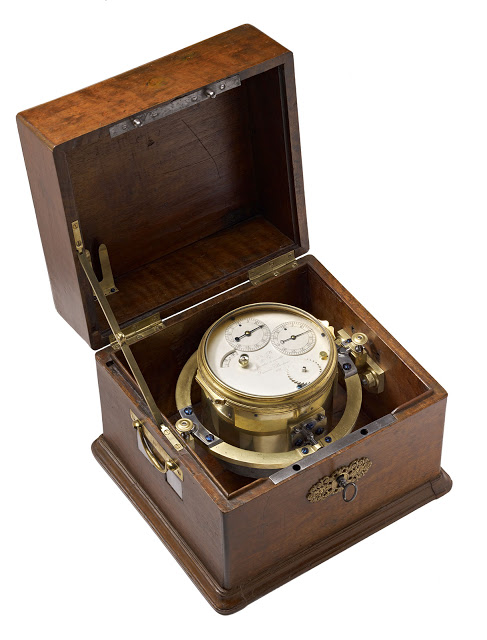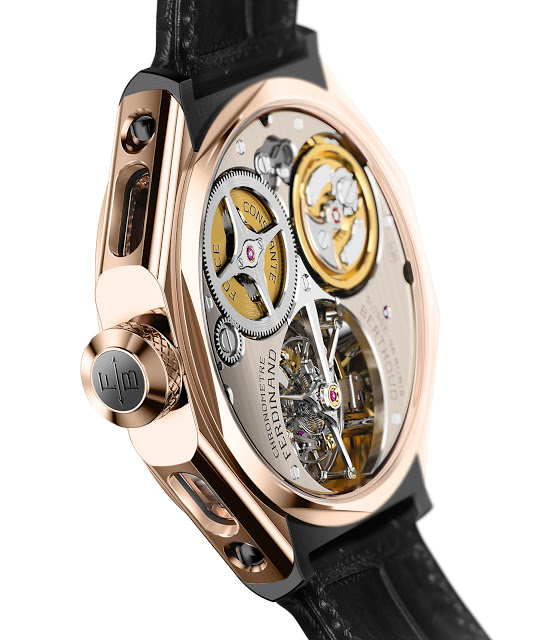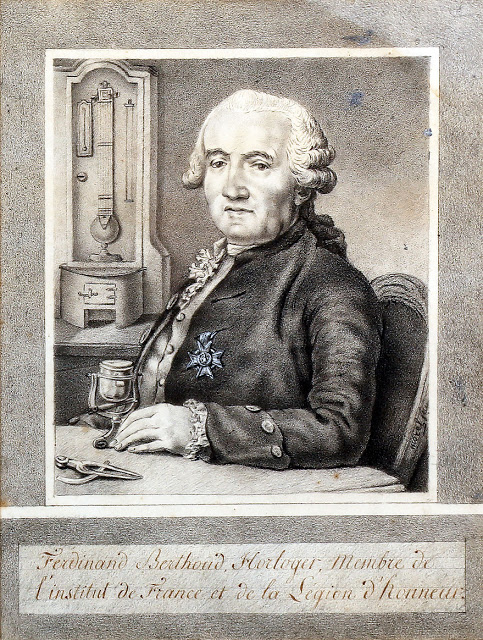
Chopard gets high marks for an appealing moon phase indication screen, which eschews the typical type of the “M-shaped” window for a single that appears a bit more natural with a round window. A disc underneath moves in order to replicate the appearance of the present moon in the sky, which is surrounded by the motif of small stars (which Chopard claims are visually representative of real starts in the Northern Hemisphere). More so, the moon phase indicator window itself revolves round its own axis in the sub-dial. It is not a functional element within my comprehension but does really help the dial stay fresh and interesting. The moon phase design component is intentionally noticeable and highlighted on these timepieces, whose name once more is “Lunar One. “Although a number of these dial complications may be corrected through the crown, the L.U.C Lunar One case includes four inset pushers onto it which can help to rapidly correct the calendar and moon phase advice should you leave the watch unworn for some time. I do also see that the view is an automatic, but given the quantity of complications here that may be a pain to correct, it would have been nice to either have a power reserve indicator on the dialup, or a pusher (like A. Lange & Söhne has on some models) which allows you to progress all the date information by a single day at a time.I’m traditionally not a very major fan of platinum for a watch case material, but also the precious metal was growing on me. Seeing this view from afar, you’d be forgiven for thinking it had been 18k white gold or steel and not platinum. Although it’s true that the color and ending of silver, platinum, and 18k white gold are somewhat different, most individuals do not actually know the difference. More so, platinum is a heavy metal in weight, and also susceptible to scratching easily. So why then is this precious metal even more valuable than gold? My perception is that it boils to rarity given that platinum (when compared with gold) is much more difficult to come by.
A long dormant name in watchmaking, Ferdinand Berthoud is now back in business, thanks to Chopard. Conceived as a specialist manufacturer of top of the line complications, Ferdinand Berthoud makes it debut with the FB 1 Chronometer, a wristwatch powered by a newly developed movement featuring a tourbillon regulator as well as a chain and fusee constant force mechanism.
An 18th century name revived
Ferdinand Berthoud was born in 1727 in the Swiss town of Neuchâtel, but like all other eminent watchmakers of the era, moved to Paris to practice his trade. A peer of Abraham-Louis Breguet, Berthoud was clockmaker to both the French Navy and King of France. Like his great rival Pierre Le Roy (who also lends his name to a resurrected company), Berthoud is best known for his marine chronometers, which serve as inspiration for the FB 1 Chronometer wristwatch.
 |
| Ferdinand Berthoud marine chronometer no. 6, c. 1777 |
The FB 1 Chronometer is the first watch from the recently resurrected name, one that is completely separate from its parent, Chopard. So the new is entirely new, though it is manufactured in Chopard’s factory in Fleurier, the very same facility that produces many of the wonderfully conceived and finished Chopard L.U.C movements. Both L.U.C and Berthoud are overseen by Karl-Friedrich Scheufele, scion of the family that owns Chopard.

The FB 1 Chronometer
Given the provenance, the movement is unsurprisingly impressive. It has a tourbillon as well as a chain and fusee, features that are found in other movements, like in the original Lange Tourbillon Pour le Mérite. But what makes the FB 1 different lie in the details of the movement construction. To start with it’s constructed like an old marine chronometer movement, albeit using modern materials. German silver bridges form the top and bottom plates, keeping all the gears in place. The bridges are held together by titanium pillars pillars.
 |
| The titanium pillars in between the plates |
 |
| The one-minute tourbillon |
Because the movement is constructed in this manner, some of its components are floating, that is anchored only on one side, instead of both as is convention. The suspending fusee, visible on the back of the movement, is one such floating part.
 |
| The chain and fusee |
In the spirit of marine chronometers, the FB 1 is COSC certified, but more importantly, it has a directly driven centre seconds. That means the seconds hand is connected directly to the gear train, instead of being driven via intermediate gears as is common in centre seconds watches.
 |
| Power reserve display at nine o’clock with the time at 12 o’clock |
The FB 1 Chronometer case is octagonal, being vaguely based on similarly shaped marine chronometers of old. It’s 44mm in diameter and 13mm thick. Four sides of the case have sapphire portholes, offering a view of many details inside the movement, made possible by the pillar construction.

Two versions of the FB 1 Chronometer are available, both with cases comprised of two materials. The first is in white gold with titanium lugs, while the second is in rose gold with black ceramic lugs. Both are limited to 50 pieces.

The Ferdinand Berthoud FB 1 Chronometer is priced at SFr220,000 before taxes, equivalent to US$225,000.
 |
| Ferdinand Berthoud |
 |
| Karl-Friedrich Scheufele |